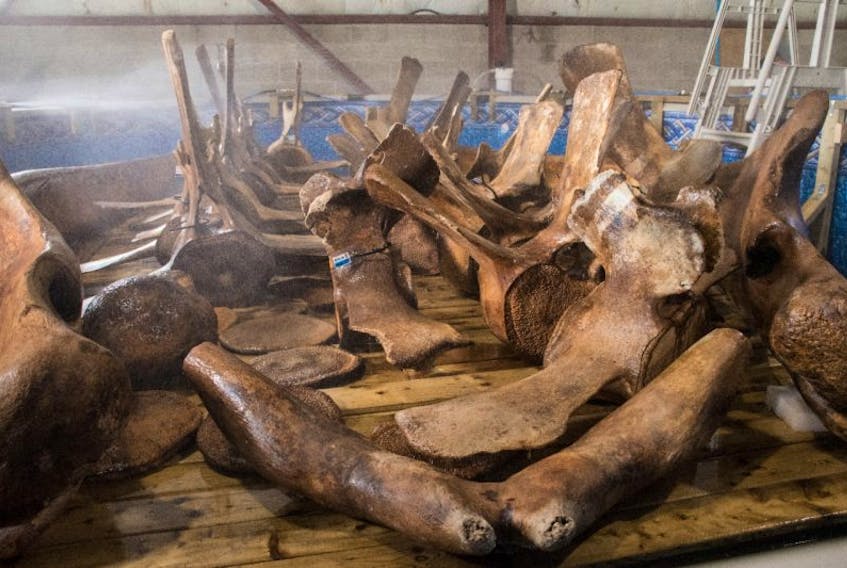A rare blue whale skeleton will be on display in Memorial University’s new Core Science Facility when it opens in 2020.
A donation made by Mark and Sandra Dobbin, and Craig and Lisa Dobbin, in honour of Mark and Craig’s mother Eleanor (Penney) Dobbin provided the core funding required to enable the restoration and installation of the skeleton.
In May 2014, two blue whales washed up on the shore of Trout River and Rocky Harbour in western Newfoundland. The carcass of the whale found at Trout River was preserved by a team from the Royal Ontario Museum in Toronto, and used as part of its “Out of the Depths: The Blue Whale Story” exhibit.
The fate of the Rocky Harbour whale was less certain due to the cost and resources required to process the animal. The Dobbins approached Memorial University about securing the skeleton for them.
“Memorial University is a cornerstone of our society and our economy in Newfoundland and Labrador, so supporting the university is always top of mind for me,” says Mark. “Memorial is recognized internationally for research and expertise related to ocean sciences.”
Blue whales are the largest animals to have ever lived, and with as few as 5,000 left in the world, roughly 200 to 250 in the western North Atlantic, have been designated as critically endangered.
“The ability to display a blue whale skeleton in this way places Memorial among a select group worldwide,” says Memorial University president Kachanoski. “A rare gift like this, secured by a generous group of donors, not only sets our university apart, but will also provide an incredible learning experience for anyone who visits our Core Science Facility.”








